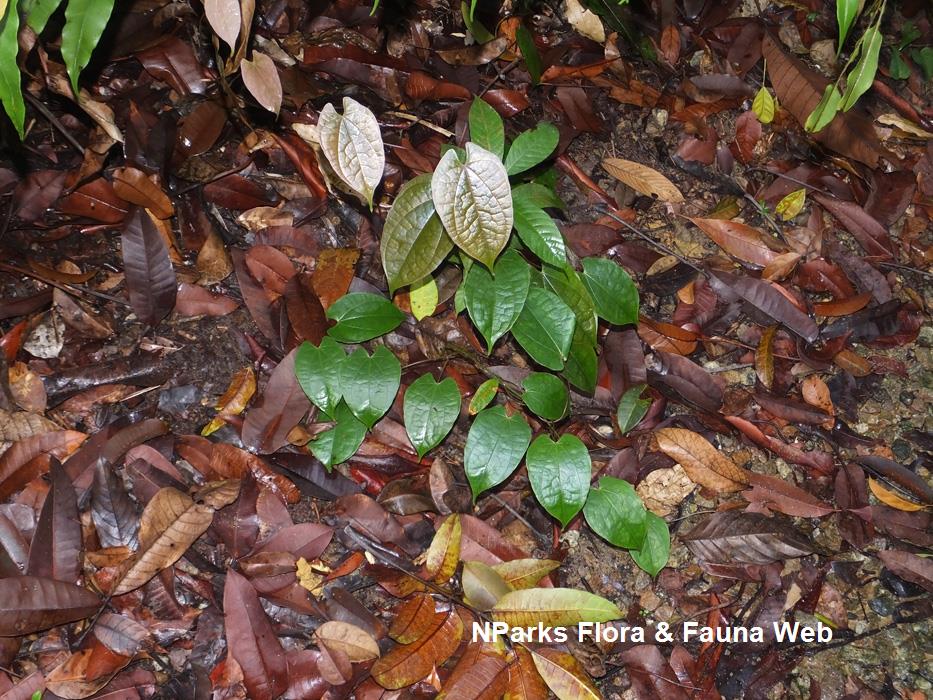
Back
Dioscorea sansibarensis Pax
| Family Name: | Dioscoreaceae |
| Synonyms: | Dioscorea macronra, Dioscorea welsitschii |
| Common Name: | Zanzibar Yam |
Name
Classifications and Characteristics
| Plant Division | Angiosperms (Flowering Seed Plants) (Monocotyledon) |
|---|---|
| Plant Growth Form | Climber |
| Lifespan (in Singapore) | Perennial |
| Mode of Nutrition | Autotrophic |
Biogeography
| Native Distribution | Tropical Africa |
|---|---|
| Native Habitat | Terrestrial |
Description and Ethnobotany
| Growth Form | A herbaceous vine, the stems can grow up to 7m in length. |
|---|---|
| Roots | It has tuberous roots which are toxic. |
| Foliage | The simple leaves are heart-shaped and are oppositely arranged along the stem, but alternately near the base. Leaf blades measure about 6 - 27 cm long and 7 - 42 cm wide with 7 - 11 veins. The long petiole measures 6 - 20 cm, sometimes slightly longer than the blade, with clasping base and stipulate lobes. Leaves are smooth (glabrous) with irregular margin of 3 - 5 lobes and caudate leaf tips. |
| Stems | The stems are glabrous and have bulbils growing out from the axils. |
| Etymology | The genus name is derived from 'Dioscorides', a 1st century Greek physician and herbalist who was the author of 'Materia Medica'. |
| Ethnobotanical Uses | Others: The tubers and bulbils are used to poison wild animals or as a fish poison. |
Landscaping Features
| Usage Hazard - Cons | Invasive / Potentially Invasive |
|---|
Plant Care and Propagation
| Light Preference | Semi-Shade, Full Sun |
|---|---|
| Water Preference | Moderate Water |
| Plant Growth Rate | Fast |
| Rootzone Tolerance | Fertile Loamy Soils |
| Propagation Method | Aerial Bulbil |
Foliar
| Mature Foliage Colour(s) | Green |
|---|
Image Repository
Others
| Master ID | 88 |
|---|---|
| Species ID | 1384 |
| Flora Disclaimer | The information in this website has been compiled from reliable sources, such as reference works on medicinal plants. It is not a substitute for medical advice or treatment and NParks does not purport to provide any medical advice. Readers should always consult his/her physician before using or consuming a plant for medicinal purposes. |










